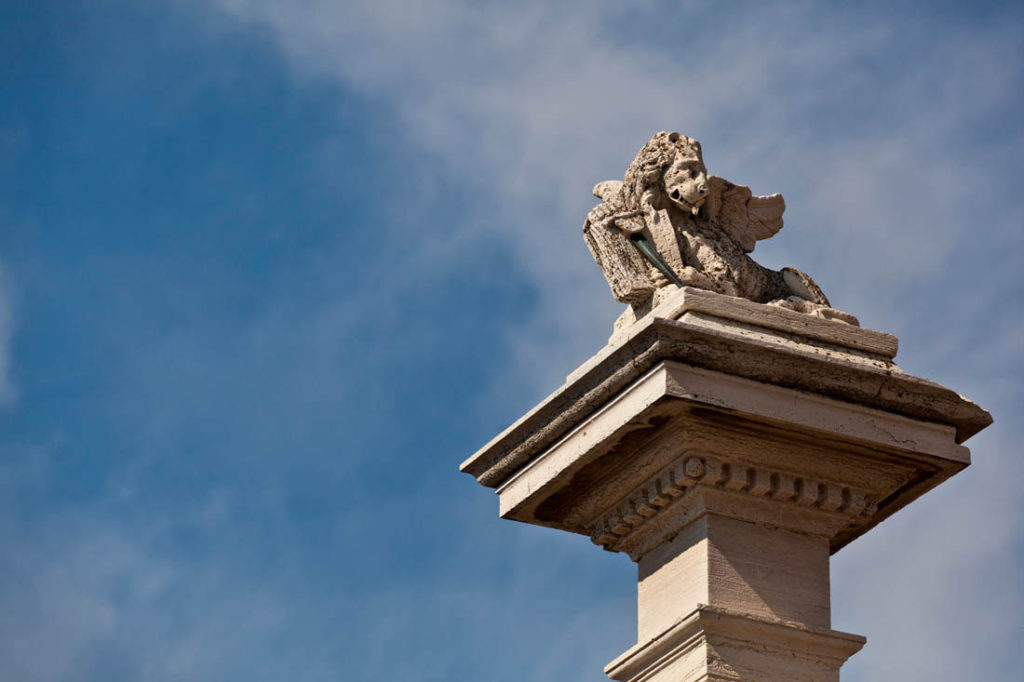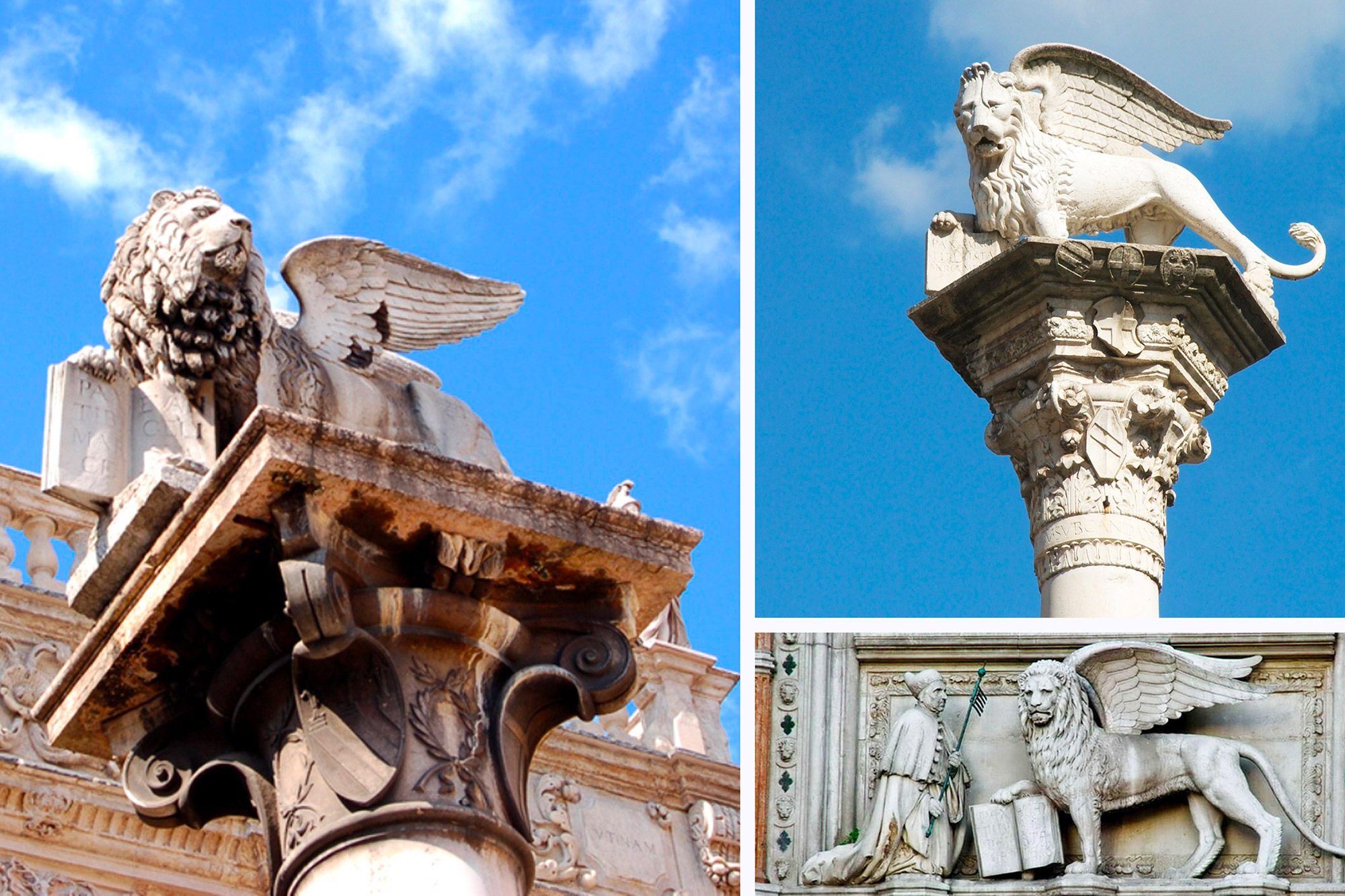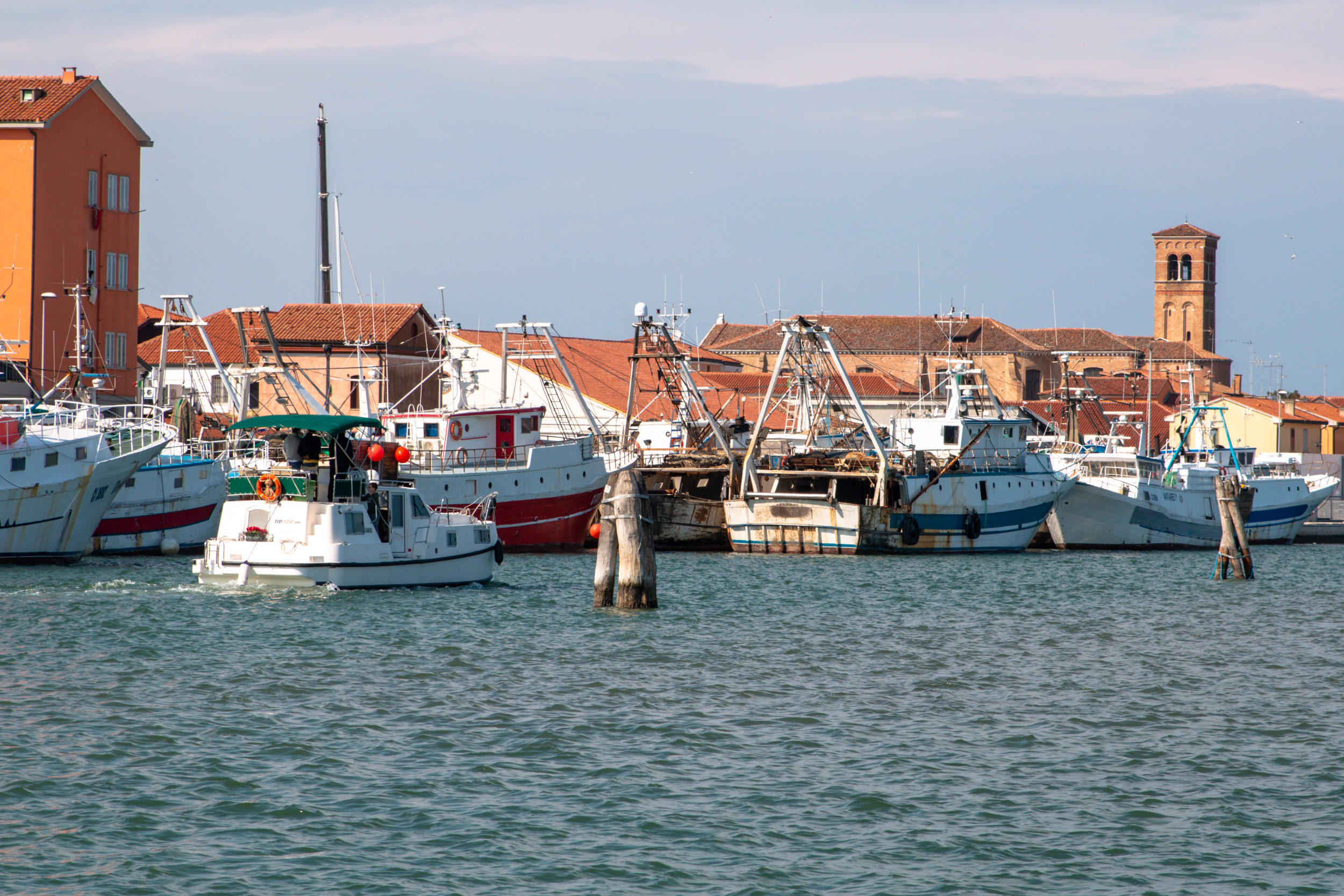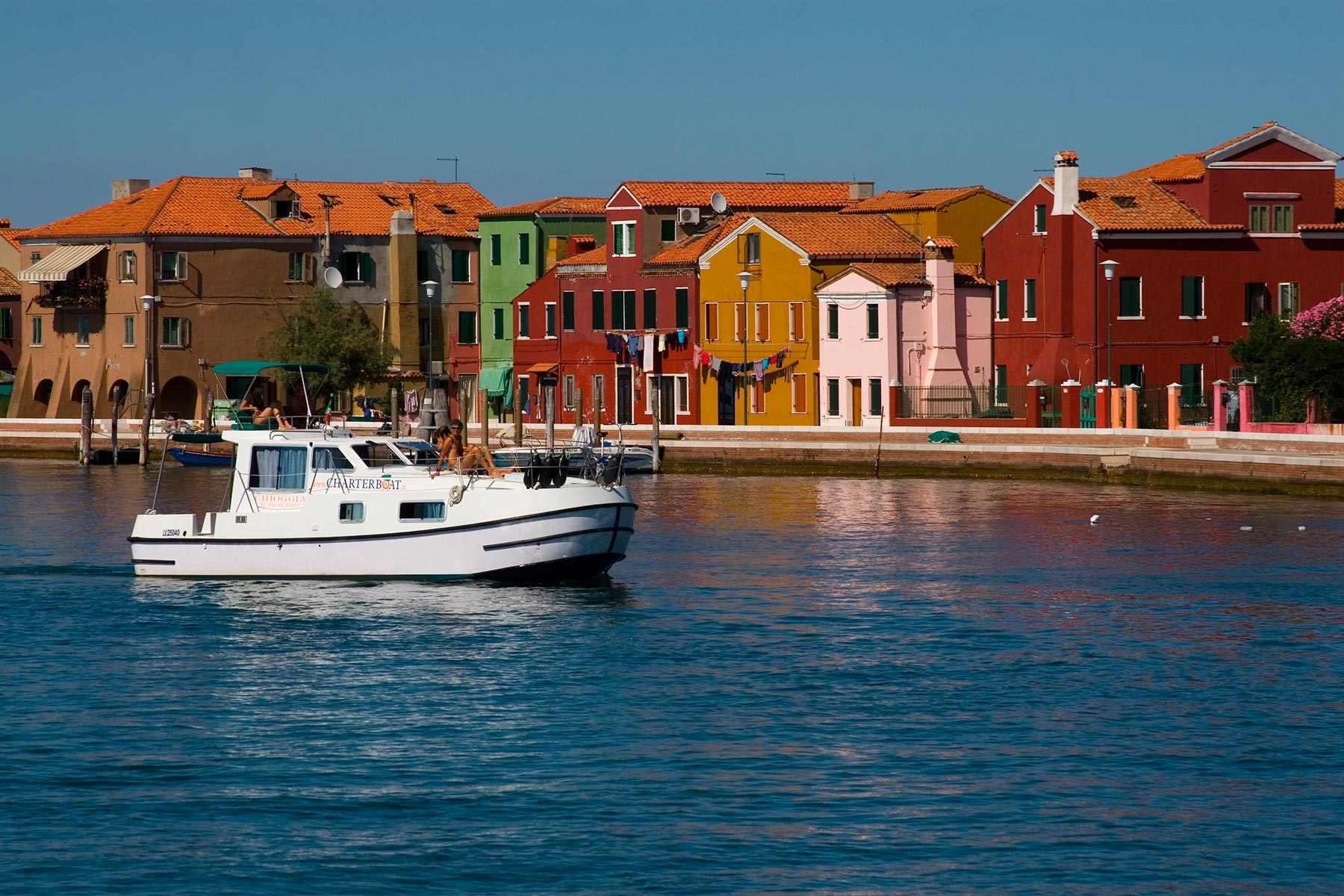The history and the meaning of the Lion of Saint Mark – Venice and Chioggia
Have you ever wondered why the winged lion, or the Lion of Saint Mark, is the symbol of Venice?
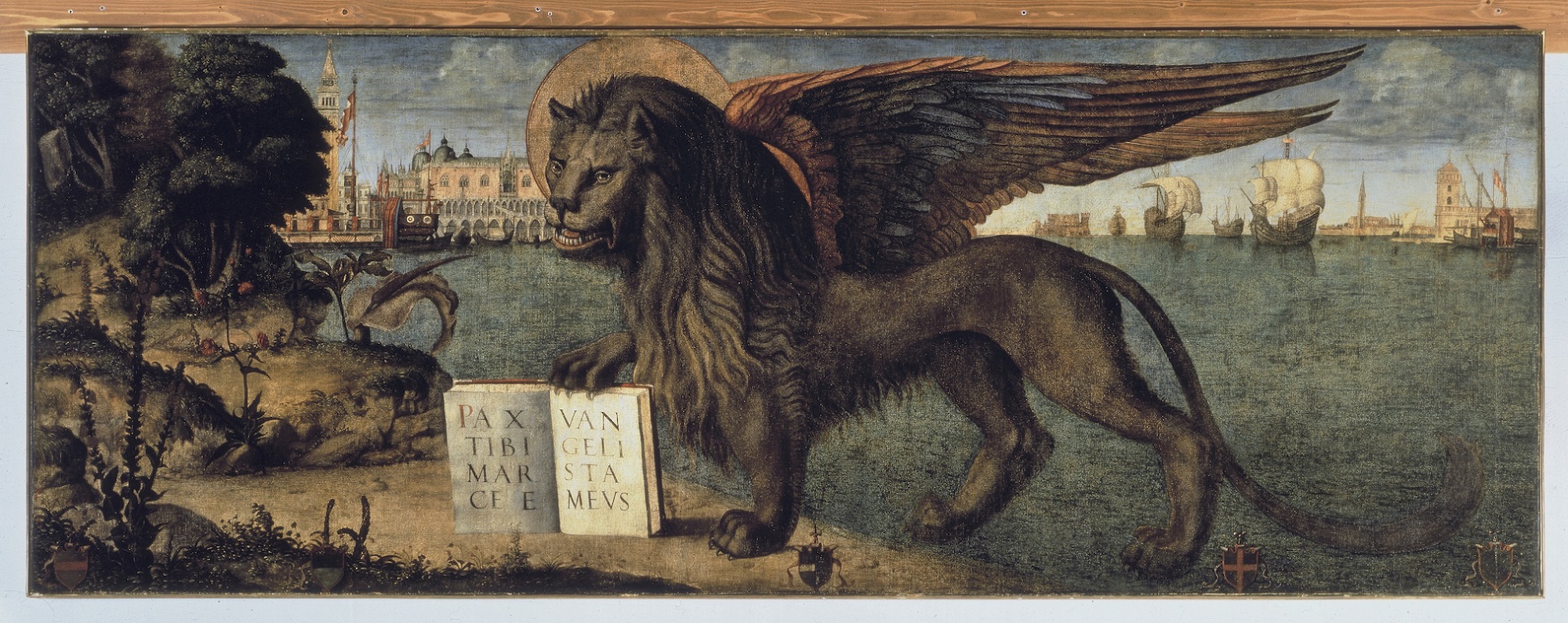
The meaning lies in the words in the book placed under the paw of the lion: “Pax tibi Marce, evangelista meus, hic requiescat corpus tuum” – “Peace to you Mark, my Evangelist, here may your body rest”.
It is said that during Mark’s journey from Aquileia to Rome, an angel appeared during his stop in the Venetian Lagoon and said those words.
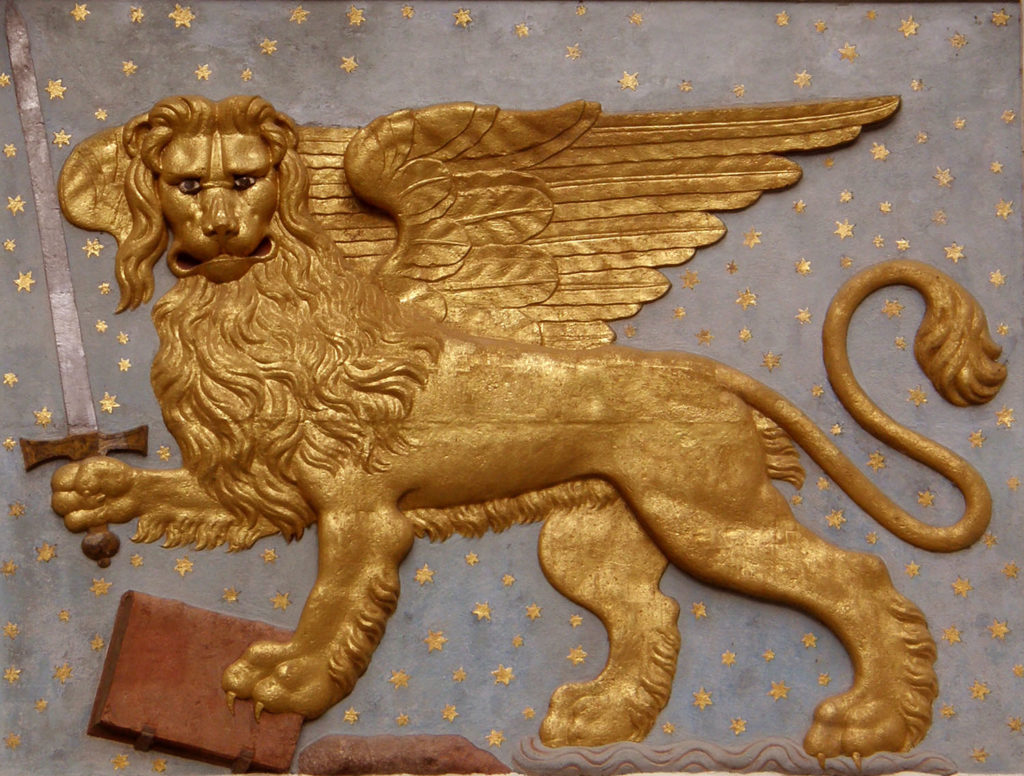
Saint Mark became then in 1904 the symbol and the patron saint of the city. His relics were then brought to the Basilica, which became very important as it kept one of the four Evangelists.
Only in 1260 Saint Mark was represented by his symbol, that is the winged lion, which also became the symbol of the city, chosen by the Most Serene Republic of Venice.
The Lion acquired so a political and religious content: it could express power and majesty, but it was also the symbol of the strength of the word of the Saint, spiritual elevation thanks to the wings, wisdom thanks to the book under the paw and justice for the presence of the sword.
The Lion of Saint Mark is represented in different positions:
Passing: in profile, with the right front paw placed upon the book.
Rampant: in profile, on its hind legs.
In moéca: in front, seated and with its wings outstretched, similar to a crab (in Venetian dialect “moléca” is the name of small molting crabs).
In gazzetta: seated, with outstretched wings and the halo.
Flag-bearer: rampant, bearing a flag.
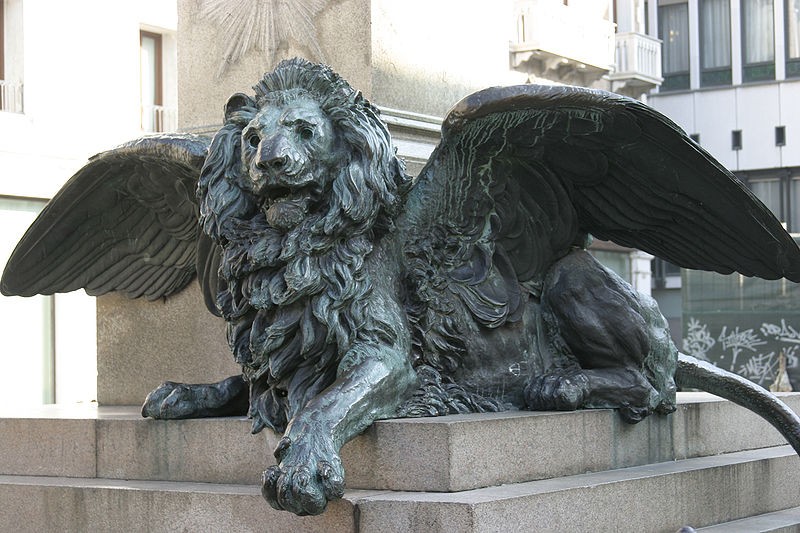
As far as the representation of the lion is concerned there are some major curiosities:
The book under its paw may be portrayed open or closed.
When it is open it means that in that period the city was in peacetime, while if it is closed with the sword up it was in a time of war (it is represented this way also in the Serenissima flag).
There is though another interpretation of the meaning of the position of the book, that can be associated to the representations of other lions in the Veneto region:
If the lion was represented with an open book, it meant that that city had to pay taxes to the Serenissima; while if the book was closed with the sword pointing up or down, the city was exempt from paying them for merits related to war or for a matter of interest, that is to maintain good relations with it.
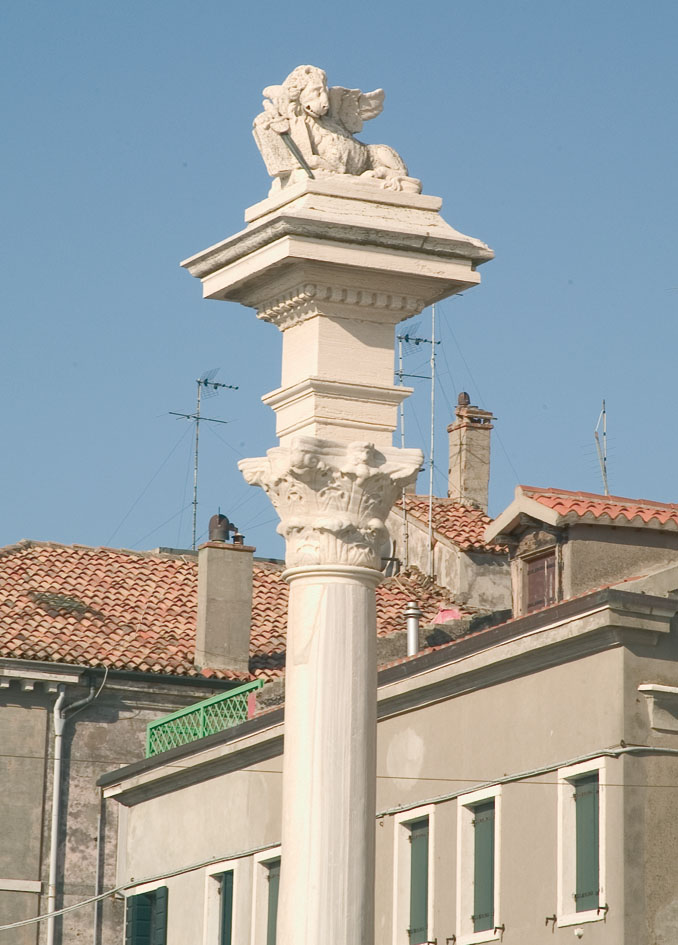
And in Chioggia?
Also in Chioggia there are several depictions of the Lion of Saint Mark around the city, but the most famous one, and also the most discussed one, is the one on the column in Piazza Vigo, which is defined as “el Gato de Ciòsa” (“The cat of Chioggia”) for its small size.
There are at least 3 versions of the history of the little lion of Chioggia, a Venetian version, a Chioggia one and finally a more neutral one:
The Chioggia version:
Every city under the rule of the Serenissima had to display the Lion of Saint Mark very openly. The Chioggiotti maintain that “el gato de Ciòsa” had been built deliberately so small, in order to make fun of the Venetian authority, because it dictated its sovereignty and consequently its rules.
The Venetian legend:
It is said that one day a Venetian cat, tired of being picked on by the winged lions of Saint Mark, ran away to Chioggia followed by four lions. The cat escaped until he managed to climb up to the only safe place: the column in Piazza Vigo. The column was indeed so high and the capital so small that the lions could not reach it even if they had wings. They decided to sit on the sides of the Vigo bridge, waiting for the cat to climb down. They waited so long that they lost their wings and turned into stone, as you can see also nowadays.
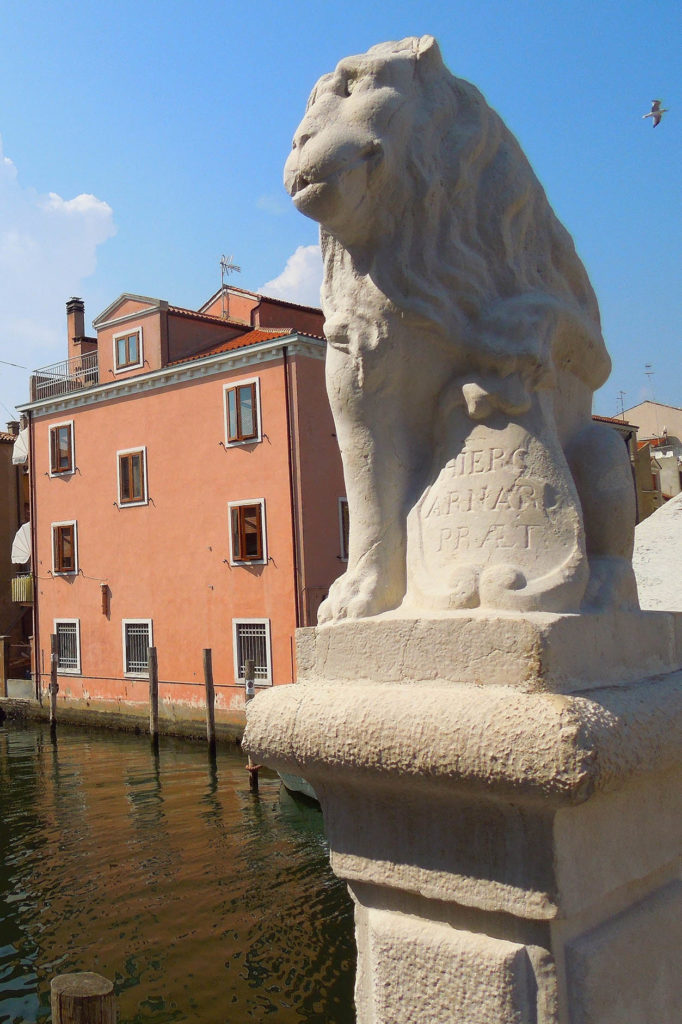
The neutral version:
It is said that the Chioggiotti commissioned the sculpture of the lion of Saint Mark to a sculptor
that was not exactly up to the task, in order to spend as little as possible. When the lion was finished, obtained from block of stone from Istria, the citizens were so unsatisfied that they asked the sculptor to improve it. So the sculptor tried to fix it by redoing the work on the same rock. But the “lion” got smaller and also this one did not look like a lion. The sculptor then kept on chisel always the same stone, until the Chioggiotti settled for the little lion that, because of its small size, looked like a cat instead of the Lion of Saint Mark.
